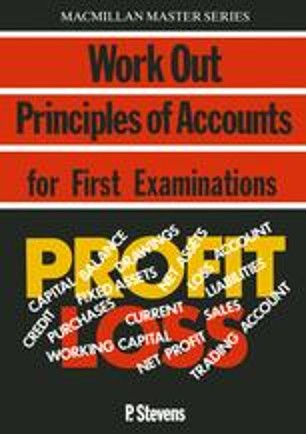Times Interest Earned Ratio Explained
Contents:


For this reason, a bank or investor will consider several different metrics before providing funding. A bank or investor would use the ratio to determine if a company might need to pay down other debts before taking on more. A business could use the ratio to ensure it is not risking solvency by taking on additional debt. Accounting ratios are used to identify business strengths and weaknesses. When used consistently over time, accounting ratios help to pinpoint trends and provide useful information to business owners and investors about the financial health and stability of a business.
84% of retail investor accounts lose money when trading CFDs with this provider. When the times earned interest ratio is comfortably above 1, you can feel confident that the firm you’re evaluating has more than enough earnings to support its interest expenses. This can be interpreted as a high-risk situation since the company would have no financial recourse should revenues drop off, and it could end up defaulting on its debts. EBIT is used primarily because it gives a more accurate picture of the revenues that are available to fund a company’s interest payments. For example, if Pebble Golf Course had EBIT of $100 and interest expense of $20, the times interest earned ratio would be 5.0 or 5x.
For this internal financial management purpose, you can use trailing 12-month totals to approximate an annual interest expense. A TIE ratio of 2.5 means that EBIT, a company’s operating earnings before interest and income taxes, is two and one-half times the amount of its interest expense. The interpretation is that the company is within its debt capacity with a low risk of not paying interest on its debt. A times interest earned ratio of at least 2.0 is considered acceptable. As the interest coverage ratio falls, the risk of a company defaulting on its debt obligations increases.

Not only does this translate into more money available to repay the principal on its loans, it also means there’s more cash to put toward expanding operations and increasing investor value. You can now use this information and the TIE formula provided above to calculate Company W’s time interest earned ratio. So you now know the TIE ratio formula, let’s consider this example so you can understand how to find times interest earned in real life. The times interest earned ratio is also referred to as the interest coverage ratio.
What’s the range of ICR/TIE ratios for public non-financial companies?
One of them is the company’s decision to either incur debt or issue the stock for capitalization purposes. Businesses make choices by looking at the cost of capital for debt or stock. Like most fixed expenses, non-payment of these costs can lead to bankruptcy; hence, the times interest earned ratio is treated as a solvency ratio. When using comparative financial statements, the calculation of dollar or percentage changes in the statement items or totals over time is horizontal analysis.
It can suggest that the company is under-leveraged, and could achieve faster growth by using debt to expand its operations or markets more rapidly. The return on equity ratio illustrates how efficiently the equity of a company is being utilized to generate a profit. The balance sheet is the easiest place to find interest expenses, while the income statement has the EBIT. Interest expenses can be found under liabilities, as shown below. Apart from this, the business also needs to ensure that there are no chances for fraud to occur.
Evaluating a Times Interest Earned Ratio
Go a level deeper with us and investigate the potential impacts of climate change on investments like your retirement account. As with quality of sales, high levels for this ratio are desirable. Note, each company chooses its own financial year so the timing of updates will vary from one to another. Build models effortlessly, connect them directly to your data, and share them with interactive dashboards and beautiful visuals.
FMC Co. Expected to Earn Q1 2023 Earnings of $1.79 Per Share … – MarketBeat
FMC Co. Expected to Earn Q1 2023 Earnings of $1.79 Per Share ….
Posted: Fri, 14 Apr 2023 09:49:11 GMT [source]
Of course, a bank or investor will consider other factors, but it shouldn’t have a problem extending a loan to the company with a TIE of 10. The EBIT figure noted in the numerator of the formula is an accounting calculation that does not necessarily relate to the amount of cash generated. Thus, the ratio could be excellent, but a business may not actually have any cash with which to pay its interest charges.
Harold’s times earned interest ratio for 2018 was:
As a rule, companies that generate consistent annual earnings are likely to carry more debt as a percentage of total capitalization. If a lender sees a history of generating consistent earnings, the firm will be considered a better credit risk. Obviously, no company needs to cover its debts several times over in order to survive. However, the TIE ratio is an indication of a company’s relative freedom from the constraints of debt.
- We shall add sales and other income and deduct everything else except for interest expenses.
- The higher the TIE ratio, the more cash the company will have leftover after paying debt interest.
- You can learn more about the standards we follow in producing accurate, unbiased content in oureditorial policy.
- The TIE ratio is used when a company decides to look for debt or issue the stock for capitalization purposes.
It will have the necessary funds to invest in new equipment or expand. A variation on the times interest earned ratio is to also deduct depreciation and amortization from the EBIT figure in the numerator. If you’re using the wrong credit or debit card, it could be costing you serious money. Our experts love this top pick, which features a 0% intro APR until 2024, an insane cash back rate of up to 5%, and all somehow for no annual fee. You may not need to calculate your times earned interest ratio today. However, as your business grows, and you begin to turn to outside resources for funding opportunities, you’ll likely be calculating your times earned interest ratio on a regular basis.
Scaling fast and deciding whether to buy or to build your payments and billing solution in-house? In this webinar we unpack the financial impact of building and managing your payment and billing solution in-house. In question, without factoring in any tax payments, interest, or other elements. EBITDA considered to be a better measure of Interest Coverage ratio. We note from the above chart that Volvo’s Times Interest Earned has been steadily increasing over the years. It is a good situation due to the company’s increased capacity to pay the interests.
Upgrade your financial models
So remember we’re gonna have when we have loans, we’re gonna have interest that we have to pay every period on this loan. There are different ways to calculate the times interest earned ratio. We’re gonna discuss the two most common ways here, but you’ll notice that they calculate very similar results when we when we discuss it. But just double check with your professor to see how they calculate this ratio, right? The most common way to calculate it is through this first ratio, Times interest earned.
It is helpful to calculate because debt can turn out to be an Achilles heel for businesses. Even in the event of dilution of a company, debts are the first obligations serviced before meeting the obligations to other stakeholders. As you can see, creditors would favor a company with a much higher times interest ratio because it shows the company can afford to pay its interest payments when they come due. Higher ratios are less risky while lower ratios indicate credit risk. The times interest ratio is stated in numbers as opposed to a percentage.
The days sales in inventory of capital for incurring more debt has an annual interest rate of 3%. Investors are looking forward to annual dividend payments of 4% plus an increase in the company’s stock price. Therefore, its total annual interest expense will be $500,000 and its EBIT will be $1.5 million. In certain ways, the times interest ratio is understood to be a solvency ratio. This is because it determines a company’s capacity to pay for interest and debt services.
- It’s more important to think about what the ratio signifies for a business, showing the number of times over it can pay its interest.
- A company’s financial health is calculated using several different metrics.
- Interest payments are used as the metric, since they are fixed, long-term expenses.
- A high ratio means that a company is able to meet its interest obligations because earnings are significantly greater than annual interest obligations.
- 84% of retail investor accounts lose money when trading CFDs with this provider.
Despite its uses, the times interest earned ratio also has its limitations, such as the EBIT not providing an accurate picture as this value does not always reflect the cash generated by the company. For instance, sometimes, sales are made on credit, and it’s possible for a company’s ratio to come out low in the calculation despite excellent cash flows. Generally speaking, a company that makes a consistent annual income can maintain more debt as part of its total capitalization. When a creditor finds that a business has consistently made enough money over a period of time, the company will be viewed as a better credit risk. Obviously, creditors would be happy to lend money to a company with a higher times interest earned ratio. This is because it proves that it is capable of paying its interest payments when due.
This has an important implication for dividends, since bondholders will be paid before dividends are paid. If a company can’t meet its debt obligations, it’s fair to say that the company won’t be able to pay its dividend. One of the lesser-known measures that helps determine the financial strength of a company is the interest coverage ratio.
I have no business relationship with any company whose stock is mentioned in this article. I/we have no stock, option or similar derivative position in any of the companies mentioned, and no plans to initiate any such positions within the next 72 hours. TIE ratios are an indicator of the long-term financial strength of an organization. The TIE ratio is helpful for comparing two different companies in terms of how financially stable they are. TIE ratio can be taken into use for comparing the financial status of two or more entities. TIE ratio can be taken into use for measuring the current financial performance of an organization.

A business that can’t pay fixed expenses runs the risk of bankruptcy. The times interest earned ratio measures the long-term ability of your business to meet interest expenses. Learn whether this accounting ratio can be helpful for your business. Let’s say ABC Company has $5 million in 2% debt outstanding and $5 million in common stock. The firm has to generate more money before it can afford to buy equipment.

On the other hand, a https://1investing.in/ that uses a large amount of its capital as debt will have a low times interest earned ratio because of the high interest rates that they incur. Just like any other accounting ratio, it is advised not to compare your score against other businesses, but only with those who are in the same industry as you. It might not be necessary for you to calculate the TIE ratio, but when you are looking for funding from other companies, you will be calculating the Times Interest Earned ratio on a regular basis. While you might not need to calculate your company’s times earned interest ratio right now, you will as your business grows. You’ll likely turn to outside funding opportunities, and it will be beneficial to regularly calculate your TIE ratio. The TIE ratio’s primary purpose is to help measure the likelihood of a company defaulting on a new loan.
In general, a company with a higher interest coverage ratio or a higher times interest earned ratio is considered to be in better financial health. The times interest earned ratio, also known as the interest coverage ratio, measures how easily a company can pay its debts with its current income. To calculate this ratio, you divide income by the total interest payable on bonds or other forms of debt. After performing this calculation, you’ll see a number which ranks the company’s ability to cover interest fees with pre-tax earnings. Generally, the higher the TIE, the more cash the company will have left over. Times interest earned ratio is a solvency ratio indicating the ability to pay all interest on business debt obligations.


